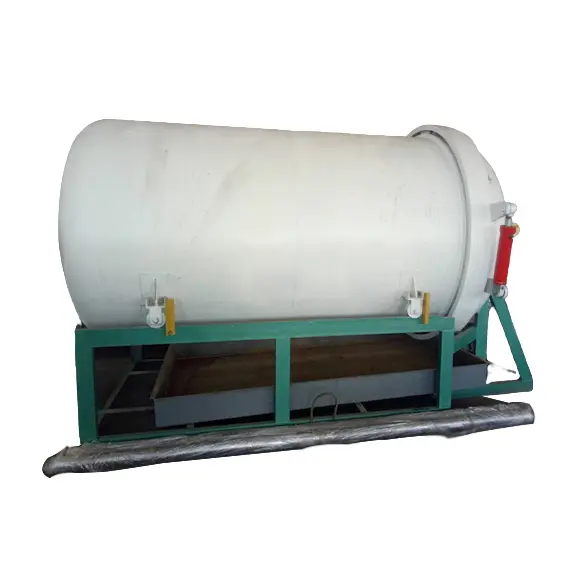Novemba . 27, 2024 21:01 Back to list
Innovative Solutions for High-Speed Centrifuge Applications in Laboratory and Industrial Settings
High-Speed Centrifuge Products Revolutionizing Laboratory Efficiency
In the realm of scientific research and clinical diagnostics, high-speed centrifuges have emerged as indispensable tools that enhance laboratory efficiency and accuracy. These sophisticated machines are designed to separate biological fluids, macromolecules, and cellular components at remarkably high speeds, which is essential for a variety of applications in biochemistry, molecular biology, and clinical diagnostics.
Understanding High-Speed Centrifugation
Centrifugation is a process that utilizes centrifugal force to separate mixtures based on differences in their densities. High-speed centrifuges can achieve speeds upwards of 20,000 RPM, generating centrifugal forces that exceed 30,000 g. This technology is critical for projects that require the rapid separation of cellular components, such as organelles, proteins, and nucleic acids.
One of the primary advantages of high-speed centrifuges is their ability to isolate cellular components with minimal disruption. For instance, in biological research, it is vital to separate cellular debris without damaging the delicate structures within cells. High-speed centrifuges excel in this regard, providing a robust solution for tasks such as collecting supernatants from cell cultures or isolating plasma from blood samples.
Applications in Various Fields
High-speed centrifuge products find applications across a multitude of fields
1. Clinical Diagnostics In medical laboratories, high-speed centrifuges are routinely used to separate blood components for tests such as serology and hematology. The ability to efficiently isolate plasma or serum from whole blood is crucial for accurate testing and diagnosis.
2. Molecular Biology In research settings, high-speed centrifuges facilitate the isolation of DNA, RNA, and proteins. This is particularly important for downstream applications such as electrophoresis, cloning, and sequencing. The precision and speed of these centrifuges reduce the risk of contamination and enhance the quality of the samples.
3. Pharmaceutical Industry High-speed centrifugation plays a pivotal role in the development of pharmaceuticals, particularly in the purification and formulation of drugs. It enables the efficient separation of active pharmaceutical ingredients from solvents and excipients, ensuring the final product meets stringent safety and efficacy standards.
high speed centrifuge products

4. Environmental Testing Laboratories engaged in environmental monitoring utilize high-speed centrifuges to analyze soil and water samples. The ability to separate particulates from liquids quickly allows for timely assessments of pollutant levels, aiding in regulatory compliance and environmental protection efforts.
Features to Consider
When selecting a high-speed centrifuge, there are several critical features to consider. These include
- Rotor Types High-speed centrifuges come with various rotor types, including fixed-angle and swinging bucket rotors. The choice of rotor affects the sample's separation efficiency and should align with the specific applications.
- Capacity The capacity of the centrifuge, measured in liters or number of tubes, is vital for determining the throughput of a laboratory. Researchers must consider their sample volume needs to select the appropriate equipment.
- Speed and RCF The maximum speed (RPM) and the resulting relative centrifugal force (RCF) are essential specifications that influence separation efficiency. Higher speeds typically yield better results, but it's crucial to balance speed with sample integrity.
- Safety Features High-speed centrifuges often come equipped with safety mechanisms, including imbalance detection and automatic lid locking. These features are crucial for ensuring technician safety and preventing damage to samples and equipment.
Conclusion
High-speed centrifuge products have transformed laboratory practices across various fields, providing researchers and clinicians with powerful tools for sample separation and analysis. As technology continues to evolve, we can expect innovations that further enhance the performance, safety, and accessibility of high-speed centrifuges. Ultimately, the integration of these devices into daily laboratory routines is a testament to the relentless pursuit of efficiency and precision in scientific research and clinical diagnostics. For laboratories seeking to enhance their workflows, investing in high-speed centrifuges is likely to yield significant benefits, paving the way for new discoveries and improved patient outcomes.
-
High-Efficiency Physical Oil Refining Unit - Leading Exporters & Trusted Companies
NewsJun.10,2025
-
High-Efficiency Animal Oil Refining Machine - Leading Exporters & Reliable Companies
NewsJun.10,2025
-
Camellia Oil Mill Machine for Efficient Oil Extraction Leading Exporters & Companies
NewsJun.10,2025
-
Premium Pressing Shaft for Oil Press Machines Exporters
NewsJun.10,2025
-
High-Efficiency Centrifugal Filters Durable Industrial Separation
NewsJun.10,2025
-
Top Neem Seed Oil Press - Efficient, High-Yield Extraction Solutions
NewsJun.09,2025
